
Nutmeg
Nutmeg are used as condiment particularly in sweet foods. The spice in the ground form is mainly used in the food processing industry especially as a standard seasoning in many Dutch dishes. Nutmeg oleoresin is used in the preparation of meat products, soups, sauces, baked foods, confectionaries, puddings, seasoning of meat and vegetable etc. The fleshy outer cover of the fruit is crystallized or pickled or made into jellies. It is used as a drug in Eastern countries because of its stimulant, carminative, astringent and aphrodisiac properties. Excessive doses have a narcotic effect. Nutmeg oil is used in cosmetics and toiletries.
...more
Lemongrass Oil
As the name implies, lemongrass smells just like lemons, but it is milder, sweeter, and far less sour. This grass is used in countless beverages (including tea), desserts, and other forms of culinary creations as a flavoring agent when fresh lemon is not available or is not to be used because of its potent flavor.USES:Lemongrass oil has been widely praised by people around the world due to its analgesic, antimicrobial, diuretic, astringent, and nervine effects. It can help to relieve pain, boost mood, protect the integrity of the immune system, speed up wound healing, stop excessive bleeding, prevent body odor, detoxify the body and stimulate the production of milk for breastfedding women. It can also impact hormone levels and lower fever.
...more
Lavandin Oil
Therapeutic properties of Lavandin Oil: The remedial properties are antiseptic, antidepressant, analgesic, vulnerary, expectorant, cicatrisant, nervine, antispasmodic and stimulant. Ayurvedic health benefits of Lavandin Essential Oil: Many of us misconstrue that Ayurveda and the other traditional healing practices are meant for the old people or people who are still attached to the Stone Age. Ayurveda is the first and foremost healing methodology to love human beings and appreciate their individual identity, feelings, characteristics and behavioral patterns.
...more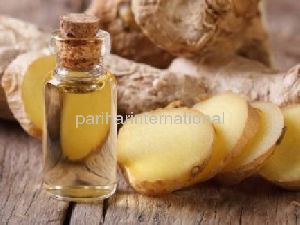
Ginger Oil
The benefits of ginger for relieving pain are widely known today, and while I prefer using fresh ginger (eaten raw, grated into your vegetable juice, or steeped into tea), using ginger oil can provide these wholesome benefits as well. When used topically, ginger oil can help relieve aches and pain, as well as promote normal blood circulation. Aromatherapists also value ginger oil's soothing and warming qualities to help address digestive problems. In fact, this is one of ginger oil's most popular uses: relieving any kind of digestive upset, such as nausea, indigestion, diarrhea, gas, and even morning sickness. Composition of Ginger Oil: Ginger oil benefits mostly come from its powerful mono- and sesqui-terpenoids, such as neral, geranial, 1,8-cineole, zingiberene, B-bisabolene, and B-sesquiphellandrene. It also contains a-pinene, B-pinene, camphene, linalool, borneol, y-terpineol, nerol, geraniol, and geranyl acetate
...more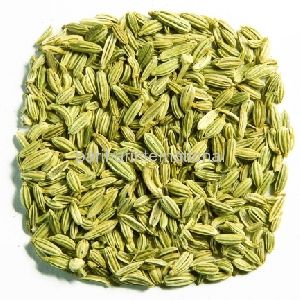
Fennel Seeds
The leaves of fennel is used for garnishing. Leaves and stalks are used in salads. It is an essential ingredient in Italian sausages, widely used to sprinkle on pizza. Dried fruits have fragrant odour and pleasant aromatic taste and therefore used as a masticatory. They are also used for flavouring soups, meat dishes, sauces, pastries, confectionaries and liquors. The fruits are aromatic, stimulant and carminative.
...more
Dry Ginger
Fresh ginger, dry ginger powder, oleoresin and oil are used in food processing. It is indispensable in the manufacture of ginger bread, confectionary, ginger ale, curry powders, certain curried meats, table sauces, in pickling and in the manufacture of certain cordials, ginger cocktail, carbonate drinks, liquors etc. In medicine, it is used as carminative and stimulant. It has wider applications in indigenous medicines. The ginger oil is used as food flavourant in soft drinks.
...more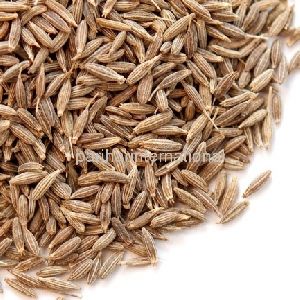
Cumin Seeds
Cumin seed have an aromatic odour and bitter taste. It is used as a condiment, and is an ingredient in curry powders, seasonings of breads, cakes and cheese. It is employed in native dishes of Central and South America. In medicine, it is used as a stimulant, carminative, stomachic and astringent. Cumin seed oil is used in perfumery and for flavouring liqueurs and cordials.
...more
Coriander Seeds
The young plant is used for flavouring and garnishing curries and soups. The fruits (seeds) are widely used as condiments with or without roasting in the preparation of curry powders, sausages and seasonings. It is an important ingredient in the manufacture of food flavourings, in bakery products, meat products, soda & syrups, puddings, candy preserves and liquors. In medicines it is used as a carminative, refrigerant, diuretic, and aphrodisiac. In household medicines, it is used against seasonal fever, stomach disorders, and nausea. Coriander oil and oleoresins are primarily used in seasonings for sausages and other meat products.
...more
Clove Bud Oil
Volatile oil, gallotannic acid, eugenin, gum, resin Blends With:Basil, Cinnamon, Citronella, Grapefruit, Lavender, Lemon, Orange, Peppermint, Rosemary, and Rose. Common Name:CloveUses:Clove Essential Oil is enriched with antimicrobial & antifungal properties and is an effective agent for minor pains and aches (particular dental pain), and is helpful when battling flu and colds. After dilution, it can be used for treating skin problems like acne, warts, scars etc. Categories: Essential Oil
...more
Citronella Oil
While the first variety yields an oil whose main components are citronellol, citronellal, geraniol, limonene, and methyl isoeugenol, the oil obtained from the second variety contains citronellal, geraniol, geranyl acetate, and limonene as its chief constituents, with geraniol and citronellal higher in concentrations than the former variety. Hence, the oil obtained from the Java variety is considered to be higher quality. The main producers of this essential oil are China and Indonesia. This oil is also produced by certain other Asian, South & Latin American and African countries in smaller amounts.
...more
Cinnamon Bark Leaf Oil
There are two primary types of cinnamon oils available on the market: cinnamon bark oil and cinnamon leaf oil. While they have some similarities, they’re different products with somewhat separate uses. Cinnamon bark oil is extracted from the outer bark of the cinnamon tree. It’s considered very potent and has a strong, “perfume-like” smell, almost like taking an intense whiff of ground cinnamon. Cinnamon bark oil is usually more expensive than cinnamon leaf oil. Cinnamon leaf oil has a “musky and spicy” smell and tends to have a lighter color. While cinnamon leaf oil might appear yellow and murky, cinnamon bark oil has a deeper red-brown color that most people usually associate with cinnamon spice. Both are beneficial, but cinnamon bark oil may be more potent. Many of the benefits of cinnamon bark oil have to do with its ability to dilate blood vessels. Cinnamon bark can help enhance nitric oxide function, which causes increased blood flow and lower levels of inflammation. Categories: Essential Oil
...more
Cinnamon
The commercial products of cinnamon are quills, quillings, featherings, chips, cinnamon bark oil and cinnamon leaf oil. ‘Quills’ are scraped peel of the inner bark of the mature cinnamon shoots, joined together with overlapping tubes, the hollow of which has been filled with smaller pieces of cinnamon peels which is dried first in the sun and thereafter in the shade. ‘Quillings’ are broken pieces and splits of all grades of cinnamon quills. ‘Featherings’ are feather like pieces of inner bark consisting of shavings and small pieces of bark left over. Cinnamon ‘chips’ are rough unpeelable barks scraped off from the thicker stems. Cinnamon leaf and bark oil are obtained by distilling the leaf and bark separately. Cinnamon bark is a popular spice with a delicate fragrance and a warm agreeable taste. It is used in the form of small pieces or powder. It is widely used in flavouring confectionary, liquors, pharmaceuticals and cosmetics. It is found to help diabetics in digestion of sugar. It has astringent; stimulant and carminative properties and can check nausea and vomiting. The cinnamon bark oil has anti-fungal properties and cinnamon leaf oil is widely used in perfumery and cosmetics.
...more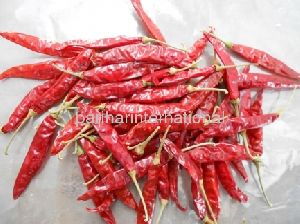
Chilli
Dry chilly is extensively used as spice in curried dishes. It is also used as an ingredient in curry powder and in seasonings. Bird chilly is used in making hot sauces as pepper sauce and Tabsco sauce. Paprika, Bydagi chilly, Warangal chapatta and similar high colour less pungent varieties are widely used for colour extraction. This colour is highly popular among food and beverage processors for its use as a colourant, since this being a ‘natural plant colour’. As a medicine it is used as an counter irritant in Lumbago, Neuralgia, and Rheumatic disorders. Capsicum has a tonic and carminative action. Taken inordinately it may cause gastro-enteritis. The enzyme isolated from chilly is used in the treatment of certain type of cancers. Oleoresin capsicum is used in pain balms and vaporubs. Dehydrated green chilly is a good source of vitamin ‘c’.
...more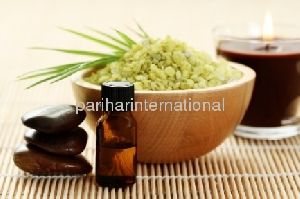
Cardamom Oil
The main constituents of its essential oil are sabinene, limonene, terpinene, eugenol, cineol, nerol, geraniol, linalool, nerodilol, heptenone, borneol, alpha-terpineol, beta Terpineol, terpinyl Acetate, alpha-Pinene, myrcene, cymene, neryl acetate, methyl heptenone, linalyl acetate, and heptacosane.The health benefits of Cardamom Essential Oil can be attributed to its ability to reduce spasms, neutralize the adverse effects of chemotherapy, reduce nausea, as well as its qualities as an antiseptic, antimicrobial, aphrodisiac, astringent, digestive, stomachic, stimulant, and diuretic substance
...more
Cardamom
The major use is for the preparation of ‘gahwa’ – a strong cardamom coffee concoction which is a symbol for hospitality among Arabs. Apart from this cardamom is widely used as a flavouring material in whole and ground form. In Asia, it can add a lingering sparkle to every kind of dishes both traditional and modern. In Scandinavian countries it is used in baked goods and confectionaries. In Europe and North America it is an ingredient in curry powder and in some sausages products. Cardamom oil and oleoresin has applications in flavouring processed foods, cordials, and liquors and in perfumery and in Ayurvedic medicines.
...more
Black Pepper Oil
The main components of the Black Pepper Essential Oil are limonene, pinene, myrcene, phellandrene, beta-caryophyllene, beta-bisabolene, sabinene, linalool, pinocarveol, alpha-termineol, camphene and alpha-terpenene. Apart from those, black pepper is also rich in minerals and vitamins like calcium, manganese, iron, vitamin K, beta-carotene, phosphorus, potassium, and selenium.The health benefits of Black Pepper Essential Oil can be attributed to its properties as a digestive, diaphoretic, carminative, aperient, antispasmodic, antirheumatic, antiarthritic, antibacterial, and antioxidant substance.
...more
Black Pepper
Pepper is largely used by meat packers and in canning, pickling, baking, considering for its preservative value. It has the ability to correct the seasoning of dishes, therefore used as a final dash at the end of cooking to effectively adjust the flavour. It is an important component of culinary seasoning of universal use and is an essential ingredient of numerous commercial foodstuffs. It is also used as an ingredient in spice mixes. White pepper is used in products like mayonnaise where, black specks of black pepper is not liked. Other products in use are pepper oil, oleoresin, micro encapsulated pepper, green pepper in brine, dehydrated green pepper, frozen pepper etc. Black pepper is an essential ingredient in Indian system of medicine. Piperine, the pungent principle in pepper oleoresin helps to enhance bio-availability and therefore used in pharmaceuticals. The major functional properties of pepper are analgesic, anti-pyretic, anti-oxidant and anti-microbial.
...more
Aniseed Oil
The roots are associated with the liver and gallbladder, and the seeds are used to treat the kidneys and digestive system. Anthelminthic, antiseptic, carminative, depurative, diuretic, emmenagogue, hepatic, stimulant, tonic are some excellent properties that makes this oil amazing. Moreover, it is also known for the beneficial uses against accumulation of toxins, amenorrhea, anemia, arthritis, cell proliferant, colic, dermatitis, dysmenorrhea, eczema, indigestion, mature skin, psoriasis, rashes, skin irritation. In perfumery carrot can be added to a blend to round out the aroma. Uses: This effective oil can play a vital role in the treatment of health problems like muscular pains, rheumatism, flatulence, colic, cramp, whooping cough, indigestion, bronchitis,catarrh and hangovers
...more
Spices

1121 white sella Rice
Be first to Rate
Rate ThisOpening Hours